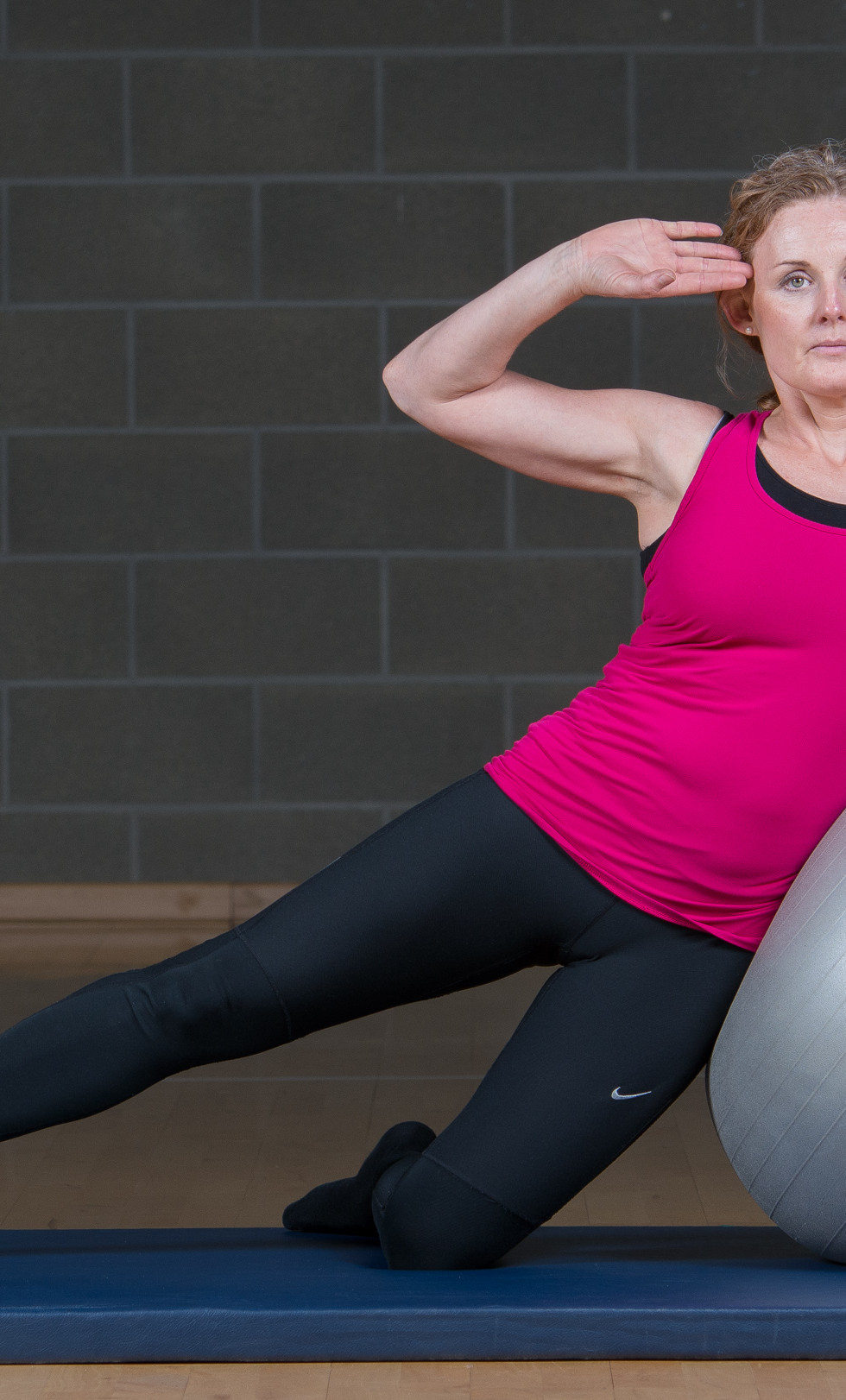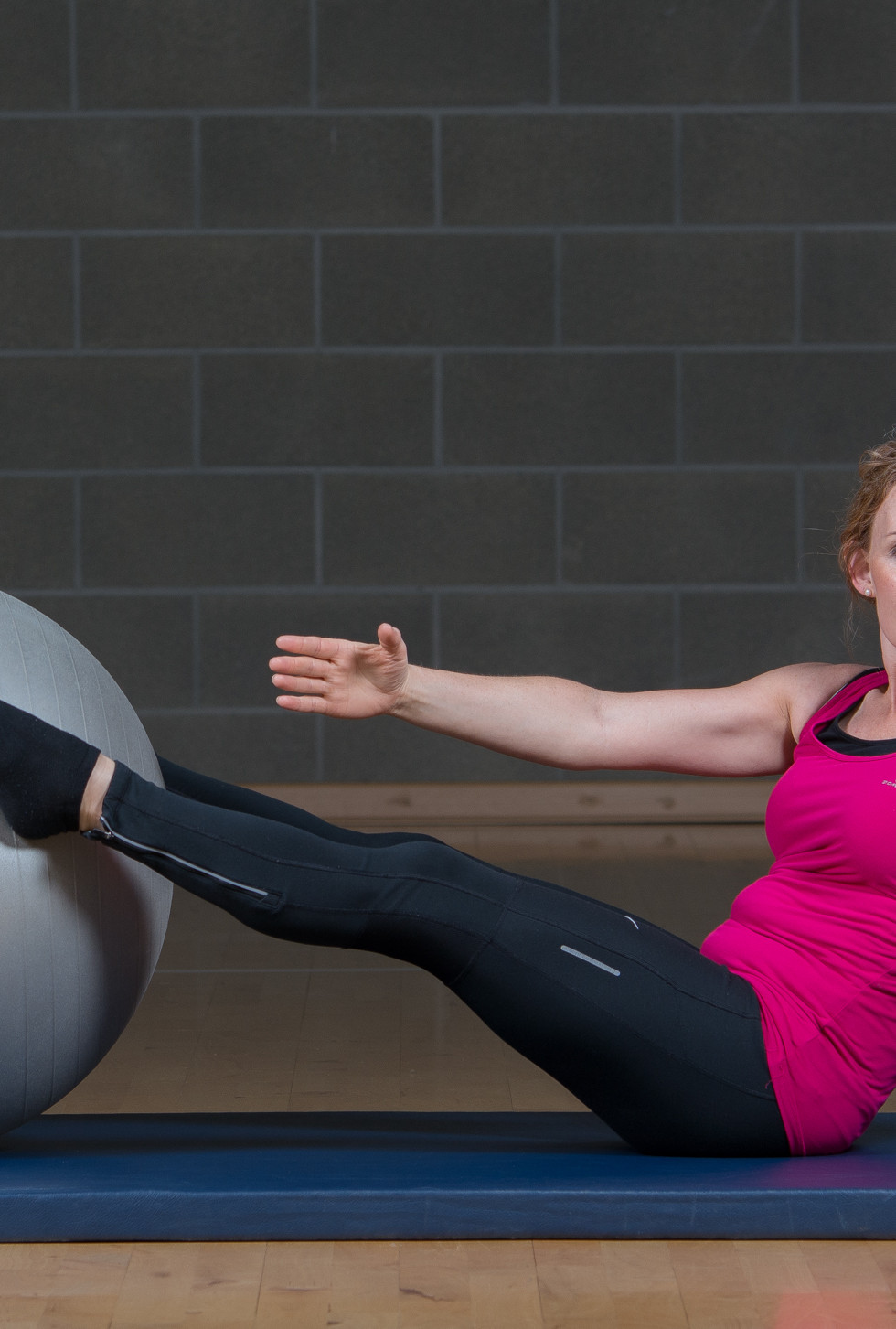Using Small Props in your Pilates Class
- NCEF
- Jun 6, 2019
- 5 min read
So…. you’ve been teaching Pilates for a while now. You’ve watched your class progress from beginner level to intermediate and maybe some of your clients can even tackle the advanced exercises. On the other hand, maybe you have a class or client who has come so far but doesn’t seem to be able to progress beyond that. Or maybe you are just looking for a way of adding variety to your classes.
If you can identify with any of this, then you may wish to consider adding some pieces of small equipment or props to your routine. There are a wide variety to choose from but favourites are a resistance band, stability ball, soft ball, Pilates ring and the foam roller. These are all inexpensive, lightweight and portable which make them ideal for class use.
Resistance Bands
Bands provide adjustable resistance for both stretch and strength exercises. There are two main types – the flat ribbon type band and the ones made from tubing with handles attached at either end. The flat ribbon type is the kind usually used in Pilates as it is easier to manipulate around the body and is more bare-foot friendly that the tubing type. When choosing bands, make sure they are long enough. A general rule of thumb is that they should be within 8 inches of your height. Use a resistance level in the medium to medium-heavy range. It may be necessary to use different strengths for upper and lower body exercises.
Uses
1) Adding Resistance: e.g. placing a band around the foot of the working leg in the Side Leg Series
2) Provides Assistance: e.g. the Teaser. A band around the feet and held in each hand can help lift the spine into a seated position.
3) Movement Clarification: e.g. Breast Stroke Prep. Holding the band in both hands behind the back encourages correct positioning of the shoulder girdle.
4) Aid Stability: e.g. Single Leg circle. Place band around the foot of the working leg with the ends held in each hand. The band helps to support the weight of the leg while circling it, making it easier to stabilise the pelvis.
5) Simulating the Reformer: Place band around the feet with ends held in each hand and perform upper body rowing action on descent phase of the Roll Up.

The Stability Ball
It's original use was as a means of challenging balance and stability. However, depending on where it is positioned it can also act as leverage as well as providing light resistance. Correct ball size is important. When seated on the ball, your thighs should be parallel to the floor and at right angles to the body. The angle at the hips can be slightly bigger but should not be smaller. A guide to correct ball size is as follows:
4’11” – 5’4” - 55cm
5’5” – 5’11” - 65cm
6’ and Over - 75cm
Uses
1) Challenges balance. By lying supine, prone or laterally on ball, balance will be challenged which automatically engages core muscles and stabilisers, e.g. Ab Prep, Breast Stroke, Side bend. The core can be further challenged by using bridging positions e.g. Plank with feet on the ball.
2) Increases leverage e.g. Double Leg Stretch - gripping the ball with the legs will increase leverage thus challenging stability more.
3) Adds Resistance. Holding the ball in your hands while performing the Roll Up will increase resistance on the up phase.
4) Provides neuro-muscular feedback, e.g. Shoulder Bridge with feet on the ball. In the up position, the muscles of the ankle will automatically kick in to stabilise.
The Soft Ball
Also known as a mini ball or physio ball. As the name suggests this is a soft, inflatable ball that ranges from 6-12” in diameter but 9-12” is the most suitable size for Pilates. It is one of the more versatile pieces of equipment, as due to it's size and softness it can be placed in various positions. It can be held between the knees or ankles, as well as in the hands. It can also be used as a support for the spine when placed either at the lumbar or thoracic regions. It can be placed beneath the pelvis or feet to challenge stability. There are numerous options with this versatile piece of equipment.
Uses
1) Provides support. Placed behind the lower back it helps to support it in exercises like the Half Roll back.
2) Adds Resistance. Placing the ball between the ankles when performing The Hundred and squeezing will increase the intensity for the adductors.
3) Challenges stability. Resting the feet on the ball when performing Plank with Knee Pull In will challenge stability and activate the core muscles more.
4) Provides focus. Holding the ball in the hands during Oblique Roll Backs can facilitate the movement as you ‘follow the ball’.
5) Provides Assistance. Positioned beneath the sacrum, it can provide assistance when performing the Roll Over.
6) Promotes greater self-awareness. When placed beneath the rib-cage during the Side Kick, you become more aware of any movement in the upper body whilst performing the exercise.
Pilates Ring
This popular piece of equipment measures 13” in diameter and is made of flexible metal or rubber with softer pads on either side. It provides gentle to moderate resistance.
Uses
1) Adds resistance. Placed between knees or ankles it provides resistance for the adductors. Can also be used to add resistance for pectorals when held in the hands eg. Scissors
2) Can make some exercises easier e.g Open Leg Rocker. Position the ankles inside the ring and grip the ring instead of the ankles when performing the move.
3) Can promote optimal body alignment as the circle determines arm position e.g. Spine Stretch Forward.
Foam Rollers
Originally intended as a rehabilitation tool, the foam roller has made it's way into mainstream fitness classes. Rollers are many shapes and sizes but the most commonly used is 36” long by 6” in diameter. While it is more limited in terms of adaptation to the traditional Pilates exercises, it offers a whole new range of exercises which marry well with the more traditional ones.
Uses
1) Massage Tool. Put your weight on the roller in different locations and gently roll the body part over and back for release of tension.
2) Body Part Prop. When placed under the knees it can help to lengthen and relax the spine.
3) Improves Stability. Similar to the stability ball, the unstable surface engages core muscles in order to stabilise e.g. Toe Touches. For even more of a challenge, try performing a Push Up with either the feet or the hands on the roller.
4) Stretch Support. The curved surface can facilitate deeper stretches. Because you are not far from the floor you can relax into the stretch without fear of falling off e.g. Hip Flexor stretch.
Before you use any of these props with a class, it’s important that you have a good understanding of how each of them can be used. They need to be used appropriately and with due consideration for the intent of the original exercise which should not be sacrificed simply to include the prop. Rather the prop should facilitate and enhance the exercise. For this reason, while the majority of Pilates exercises can be adapted to include a specific piece of equipment, there are some that just don’t work well. Likewise, there are some very good non-Pilates exercises which are very effective when performed with a specific prop and which can be incorporated into a routine.
Pilates & Corrective Exercise commences in the University of Limerick in January 2020 and we are accepting applications for this very popular module now! Click here for more information.
Photo Credit: Damien Jackson
Model: Tracy Byrne O'Donovan, TFX Fitness

















Comments